Arizona is a land of contrasts, where the rugged and harsh desert meets the lush and green mountains. It is home to a rich diversity of wildlife, including many species of birds. One of the most beautiful and peaceful birds you can spot in Arizona is the dove. With their gentle cooing and graceful flight, doves have captured the hearts of many nature lovers and birdwatchers. In this article, we will explore the world of doves in Arizona, their different species, habitats, behaviors, and interesting facts. We will also provide tips on how to attract them to your yard, and how to protect and care for them.
Types of Doves in Arizona:
There are several species of doves that can be found in Arizona, each with its own unique features and traits. Some of the most common ones are:
Mourning Dove:
Image Source
- Scientific name: Zenaida macroura
- Lifespan: 2-5 years
- Size: 9-13 inches
- Native to: Southern Canada to central Mexico
The Mourning Dove is the most common species of dove in Arizona. They are named for their distinctive mournful cooing call, which is a familiar sound in many suburban and rural areas. their cooing sound is often heard in the early morning and late evening hours. These birds are about 12 inches long with a wingspan of 17 inches. They have plump, round bodies, small heads, and long, tapered tails. The plumage of mourning doves is generally brownish-gray with black spots on the wings. They also have a distinctive black marks on their face below their eyes. Mourning doves are primarily seed-eaters, feeding on a variety of seeds from plants such as grasses, weeds, and grains. They are also known to eat insects and snails.
These birds are monogamous and form pairs during the breeding season. They build their nests on tree branches or other elevated surfaces using twigs, grass, and other materials. Females usually lay two eggs, and both parents take turns incubating them for about two weeks. After hatching, the young are fed a special type of milk called “crop milk” that is produced by the parents. The chicks fledge after about two weeks and become fully independent about a week later.
Mourning doves are popular game birds, and many people enjoy watching and feeding them in their backyards. They are also important for seed dispersal and play a role in maintaining the ecosystem.
White-winged Dove:
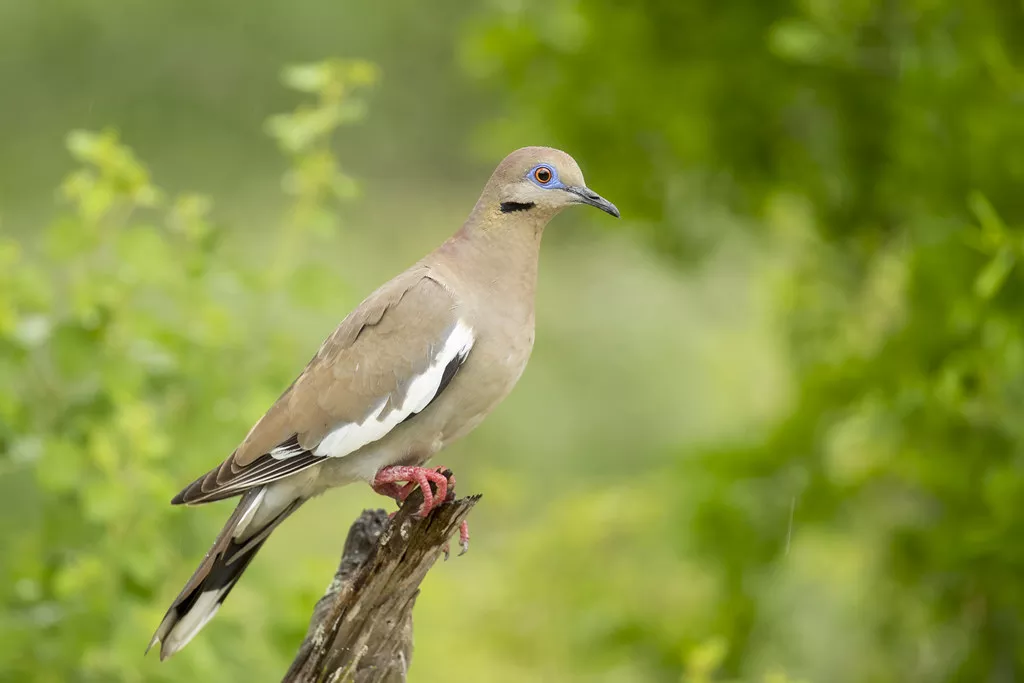
Image Source
- Scientific name: Zenaida asiatica
- Lifespan: 10-15 years
- Size: 11 in
- Native to: Southwestern United States through Mexico, Central America, and the Caribbean
The White-winged Dove is found primarily in the southern parts of Arizona. It is a large dove, measuring about 11 inches long, with a wingspan of approximately 20 inches. These doves have a unique appearance, with a white patch on their wings that contrasts with their light brown body. They also have a distinctive blue eye ring and a long, pointed tail. Both males and females look similar, but males tend to have a more vibrant plumage during the breeding season.
White-winged Doves are primarily seed eaters, but they also consume fruits, insects, and small snails. They are known to be opportunistic feeders and will eat a wide variety of food depending on what is available.
During the breeding season, these birds form monogamous pairs and build their nests in trees, shrubs, or cacti. Females usually lay two eggs, and both parents take turns incubating them for about two weeks. The chicks fledge after about two weeks and become fully independent about a week later.
White-winged Doves are famous game birds, and their populations are closely monitored by wildlife management agencies. They are also appreciated by birdwatchers for their unique appearance and behavior. In some areas, they are considered a pest because they can cause damage to crops and gardens. Overall, White-winged Doves are an important part of the ecosystem and play a role in seed dispersal and pollination.
Inca Dove:
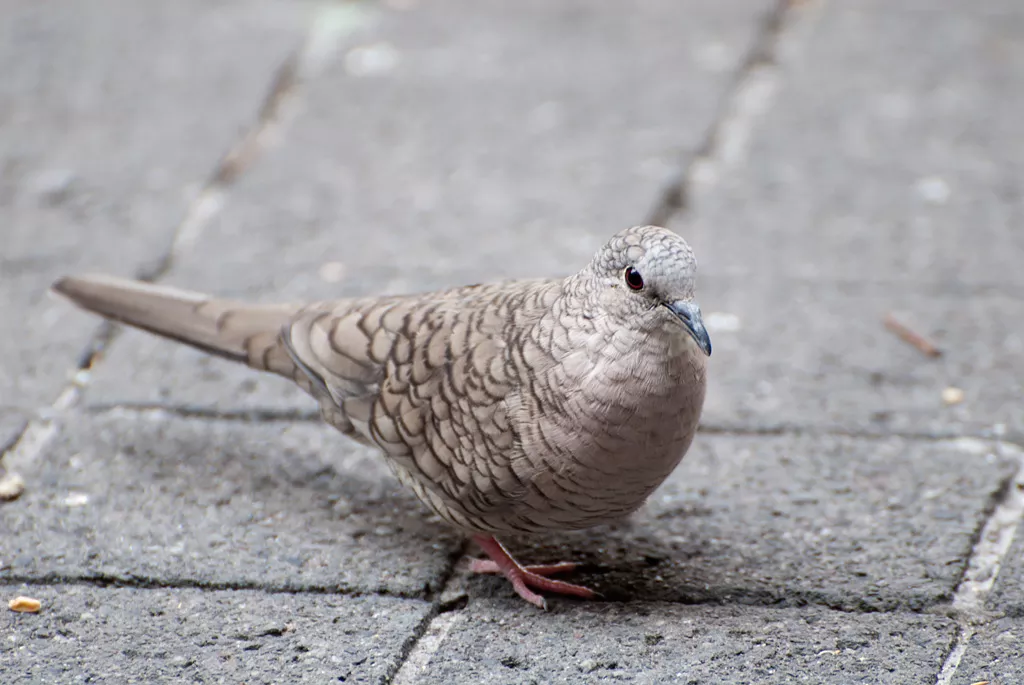
Image Source
- Scientific name: Columbina inca
- Lifespan: 8 years
- Size: 6.5–9.1 in
- Native to: Southwestern United States and in northern Central America
The Inca Dove is found primarily in the southern parts of Arizona. It is named after the ancient Inca Empire due to its association with similar arid habitats. These doves are small, measuring about 8 inches long, with a wingspan of approximately 11 inches. They have a distinctive appearance, with a scaly pattern on their wings and a slender, pointed tail. Their plumage is grayish-brown with black and white spots on their wings.
Inca Doves are primarily seed eaters, but they also consume fruits and insects. They are known to be opportunistic feeders and will eat a variety of food depending on what is available.
During the breeding season, these birds form monogamous pairs and build their nests in trees, shrubs, or cacti. Females usually lay two eggs, and both parents take turns incubating them for about two weeks. The chicks fledge after about two weeks and become fully independent about a week later.
Inca Doves are a common sight in many suburban and rural areas, and their cooing call is a familiar sound. They are appreciated by birdwatchers for their unique appearance and behavior. Overall, Inca Doves are an important part of the ecosystem and play a role in seed dispersal and pollination
Eurasian Collared-Dove:
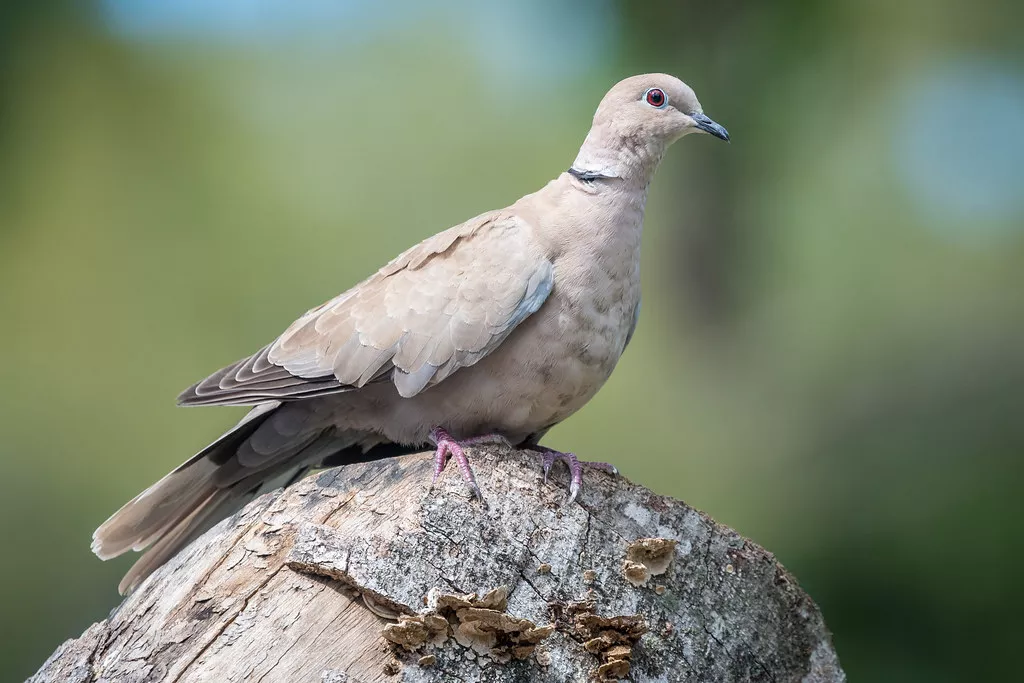
Image Source
- Scientific name: Streptopelia decaocto
- Lifespan: 4-5 years in the wild, up to 12 years in captivity
- Origin: Native to Asia and Europe, introduced to North America in the 1980s
- Size: Length 12-14 inches, wingspan 21-24 inches
The Eurasian Collared-Dove is an invasive species that was introduced to the United States in the 1980s. They are larger than mourning doves and have distinctive black collars around their necks. Eurasian Collared-Doves are found in urban and suburban areas throughout Arizona.
Their feathers are a pale grey-brown color and it has a red-orange eye-ring. This dove is known for its soft, cooing call which is a common sound in many urban and suburban areas.
Originally from Asia and Europe, the Eurasian Collared-Dove was introduced to North America in the 1980s and has since become a common sight across much of the continent. They are often seen perched on power lines or rooftops and are known to form large flocks in urban areas.
Eurasian Collared-Doves are opportunistic feeders and will eat a variety of foods, including seeds, grains, and insects. They are often found in gardens and agricultural areas where they can forage for food.
When it comes to nesting, Eurasian Collared-Doves are known for their adaptability and will use a variety of structures as their nesting site, including trees, shrubs, and man-made structures like buildings and utility poles. Their nests are often made up of twigs, grasses, and other plant materials and are typically located in a protected area like a tree or bush.
Overall, the Eurasian Collared-Dove is a fascinating bird that has adapted well to living in urban and suburban environments. Its distinctive appearance and soft cooing call make it a common sight and sound in many parts of North America.
Common Ground-Dove:
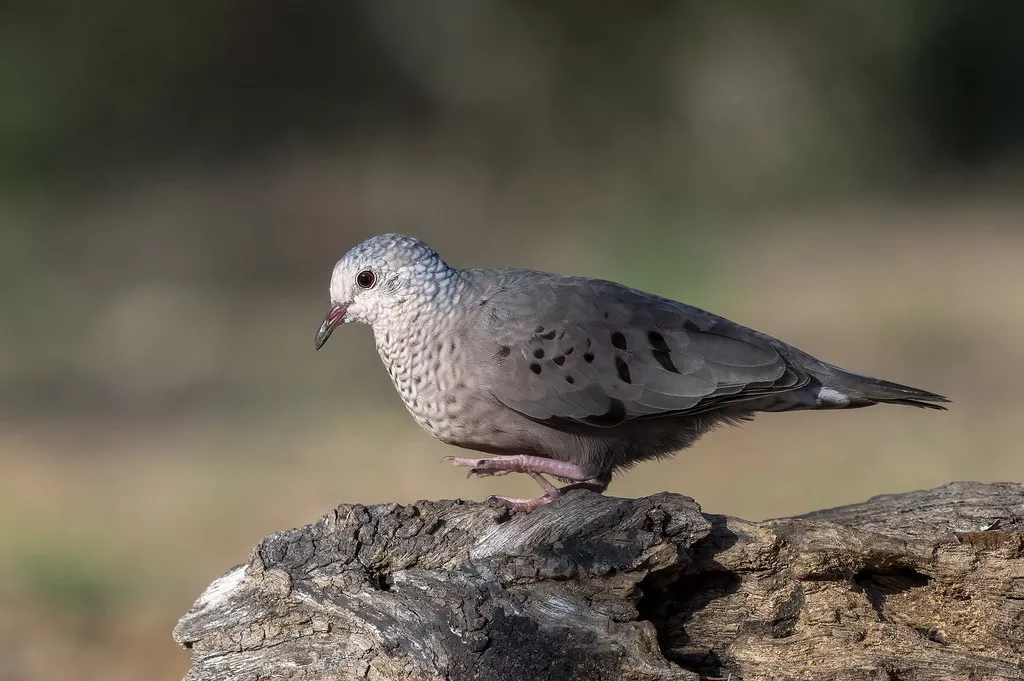
Image Source
- Scientific name: Columbina passerina
- Lifespan: 7 years
- Size: 15 to 18 cm
- Native to: Southern United States, parts of Central America, the Caribbean, and northern South America
The Common Ground Dove is found primarily in the southern parts of Arizona. They are small birds with plump bodies and short tails. It has a sandy brown head and back, and a pinkish-brown breast. Its wings are edged in a distinctive white and black pattern, and it has a bright blue ring around its eye.
As their name suggests, Common Ground Doves are typically found on the ground, foraging for seeds and small insects. They are often seen in open areas like fields and pastures, as well as in gardens and parks.
These doves are known for their soft cooing call, which can be heard throughout their range in North and Central America. They are generally monogamous and form pairs during the breeding season.
When it comes to nesting, Common Ground Doves typically build their nests on the ground, concealed in vegetation like grass or weeds. They lay two white eggs, which are incubated by both parents for around two weeks.
Overall, the Common Ground-Dove is a charming and unobtrusive bird that is a common sight in many parts of North and Central America. Its distinctive appearance and soft call make it a favorite among birdwatchers and nature enthusiasts.
Final Thoughts
Arizona is home to several species of doves, each with its unique characteristics and role in the ecosystem. Mourning Doves are the most common and widespread dove species in the state, while Inca Doves and White-winged Doves can also be found in certain areas. These doves play an important role in seed dispersal and as a food source for predators such as hawks and coyotes. Despite being a common game bird, doves in Arizona are protected under state and federal laws and hunting regulations apply. It is important to continue to monitor the populations of doves and take measures to ensure their conservation and sustainable management. By understanding their ecological importance and taking action to protect their habitats, we can ensure that doves continue to thrive in Arizona’s diverse landscapes.
Frequently Asked Questions (FAQs)
What types of doves can be found in Arizona?
There are several species of doves that can be found in Arizona, including the mourning dove, white-winged dove, Inca dove, common ground dove, and Eurasian collared dove.
What do doves eat in Arizona?
Doves in Arizona typically feed on a variety of seeds, grains, and fruits, including sunflower seeds, safflower seeds, millet, corn, and berries.
Where are the best places to see doves in Arizona?
Doves can be found throughout Arizona, but some of the best places to see them include urban parks, desert washes, and agricultural fields.
Are there any hunting regulations for doves in Arizona?
Yes, there are hunting regulations for doves in Arizona. Hunting season typically runs from early September through early November, and hunters are required to have a valid hunting license and comply with bag limits and other regulations.
How can I attract doves to my backyard in Arizona?
To attract doves to your backyard in Arizona, you can provide them with a variety of food sources, such as birdseed and fruit, and create a suitable habitat by planting trees and shrubs that provide cover and nesting sites. Additionally, keeping a clean and well-maintained bird feeder can also help attract doves.


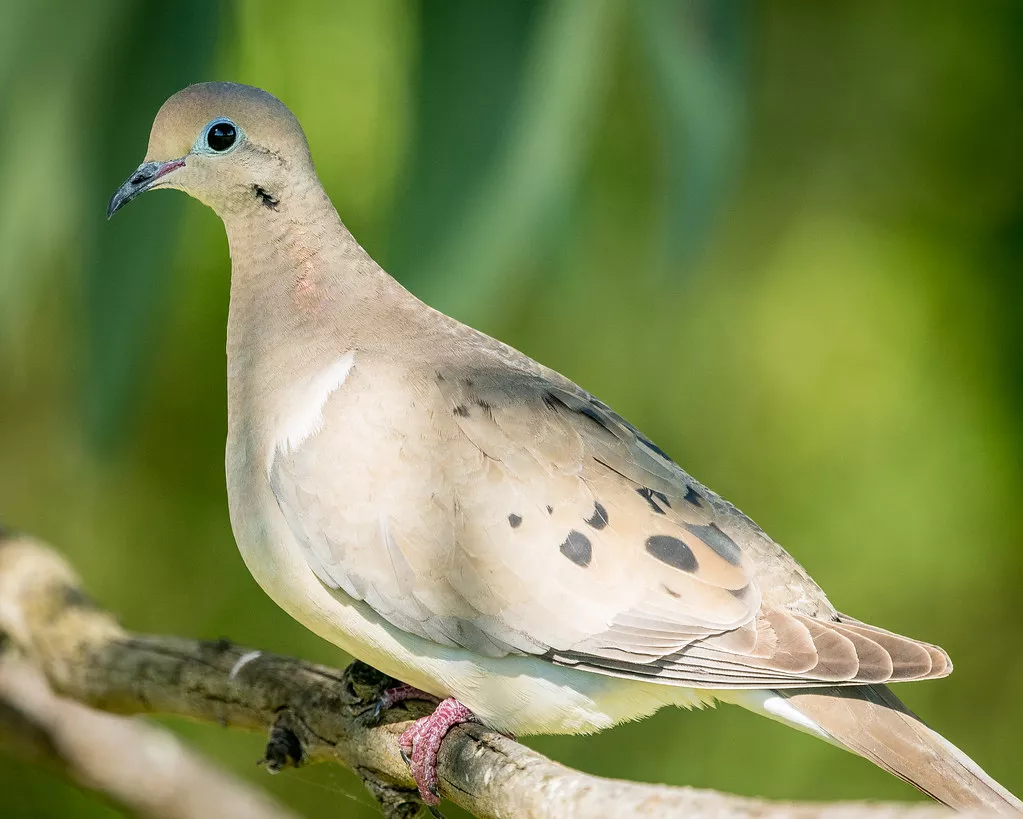
![3 Types of Doves in South Dakota [Images + IDs]](https://birdsology.com/wp-content/uploads/2023/09/51966837857_e62c6fbc37_b-600x400.jpg.webp)
![12 Species Of Hawks In Louisiana [Images + Ids]](https://birdsology.com/wp-content/uploads/2023/02/17484880426_04703d85b4_b-600x400.jpg.webp)
![16 Beautiful Bluebirds In Florida [Images + Ids]](https://birdsology.com/wp-content/uploads/2023/02/42-600x400.jpg.webp)
![10 Species Of Hawks In Wisconsin [Images + Ids]](https://birdsology.com/wp-content/uploads/2023/02/5658292472_4994da4d3f_b-600x400.jpg.webp)
